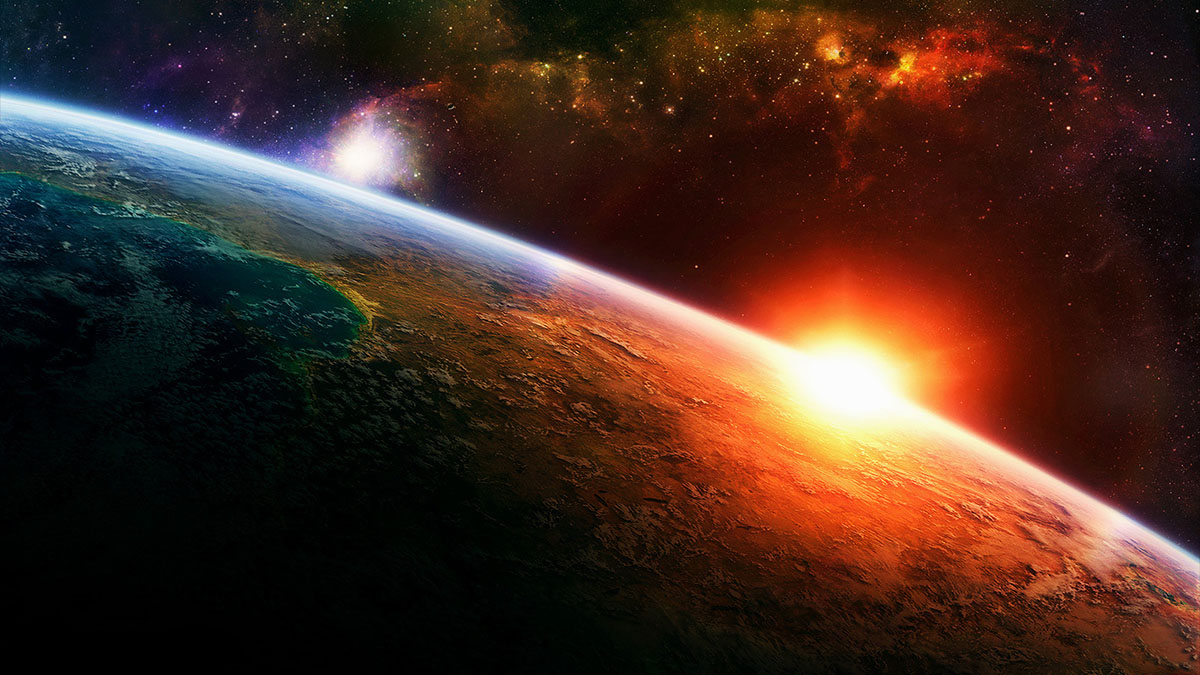in space, no one can hear you nuke

Speaking of bombing the Moon with nuclear warheads, there’s a long standing reader request that I’ve waited to fulfill next time there’s a story about weapons of mass destruction in space. If you were to set off a massive nuke on the lunar surface, what would happen? How would the explosion form and radiate? Would it be a real show of force, or would the result be an underwhelming blink-and-you-miss-it flash? And could our planet be affected by the power of the blast? In this post, we’ll answer all your questions about bombing an alien world as well as take a peek under the hood of modern nuclear weapons to understand how they work in space.
Let’s start with how thermonuclear devices actually work. Fusion bombs are multi-stage mechanisms which are made up of a fission core and fuel consisting of deuterium and a type of lithium that produces tritium when bombarded with radiation. Deuterium is a hydrogen atom with a neutron and tritium has two neutrons. When subjected to enormous temperatures and pressures, they combine into helium, releasing a small amount of energy and a stream of neutrons. And this is exactly why there’s a fission bomb in the device. When the high explosives inside it compress its plutonium and uranium core, the blast momentarily provides the pressures and heat necessary to kick start a fusion reaction. The process is very inefficient and only a very small amount of the weapon’s mass is converted to energy. In fact, a quick and dirty back of the envelope calculation of what amount of mass turns to radiation in a 10 megaton blast gives us just 465.5 grams in the following manner…
m = 4.18 × 1016 J / 299,792,4582 m/sec = 4.18 × 1016 / 8.99 × 1016 = 0.4655 kg
The rest is catapulted high into the atmosphere or even space and comes down as the nuclear fallout we all know and very rightfully fear. Predicting the exact yield of a nuclear weapon is a tricky business due to all the variables involved. From the intricate and mostly classified inner workings of the actual devices, to the many impurities even enriched nuclear fuel has, you’ll never know exactly how many megatons you’re going to get until you actually push the button and see the mushroom cloud. And here’s where things get interesting since that symbolic mushroom cloud is caused by the movement of the dust and debris in a dense atmosphere. In fact, you can see clouds like that form in many explosions, the question is how much they rise and how huge they’ll get. The destructive pressure waves and the deafening 200+ dB roar are also the effects of a nuke in an atmosphere and would vary depending on the the density of the air in which the explosion occurred.
But wait a second. The Moon doesn’t really have an atmosphere. Sure, there’s a negligible amount of gasses floating around the surface but for all intents and purposes, the lunar surface is basically a vacuum. So there would be no sound, no pressure wave and no mushroom cloud. There would certainly be a shockwave racing along the lunar surface and through the Moon’s interior, meeting at the antipodal point and possibly causing a small quake there if the blast had enough power. However, without the weight of a dense atmosphere, there would be no resistance to the growth of the nuclear fireball. It would expand in a fraction of a second and give off radiation in the form of heat, light and gamma rays. And to be seen from 238,000 miles away, the device by itself would have to be enormously powerful, even more monstrously potent than the Soviet Tsar Bomba with its estimated 57 megatons. That bomb had a theoretical upper bound of 100 megatons but the design wasn’t pushed to its maximum potential to reduce fallout. In space, where everything is already radioactive, fallout is really not a major concern. In fact, the devices would need to be pushed as far as they can go to show off their destructive potential to an alien audience.
However, because the result would just be a brief flash which would raise a big plume of pulverized dust and rock, detonating even a gigaton weapon on the Moon wouldn’t be much of a show for Earthlings. Sure, some of the debris would be hurled towards us, but the vast majority of it would burn up in the atmosphere or end up in the ocean. There could be a shallow crater on the lunar surface and the blast would uncover some volcanic rocks from the Moon’s ancient past, but that’s about it. If the explosion goes off in the wrong spot, at the wrong time and we’re not straining our binoculars and telescopes on the right place on the Moon, we could very well miss the very brief pinpoint of light. Though we certainly wouldn’t want to send a satellite to observe the event too closely because a burst of X-rays and gamma rays could fry its electronics. As I’ve written before, using a nuke in space would be like shooting off electromagnetic pulses. It would interrupt communication between enemy targets and damage computers that lack protective shielding, but it wouldn’t be nearly as effective as it could be when set off in an atmosphere where its effects would be amplified by the density of the air.





